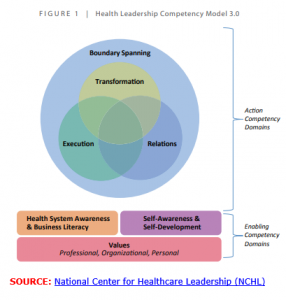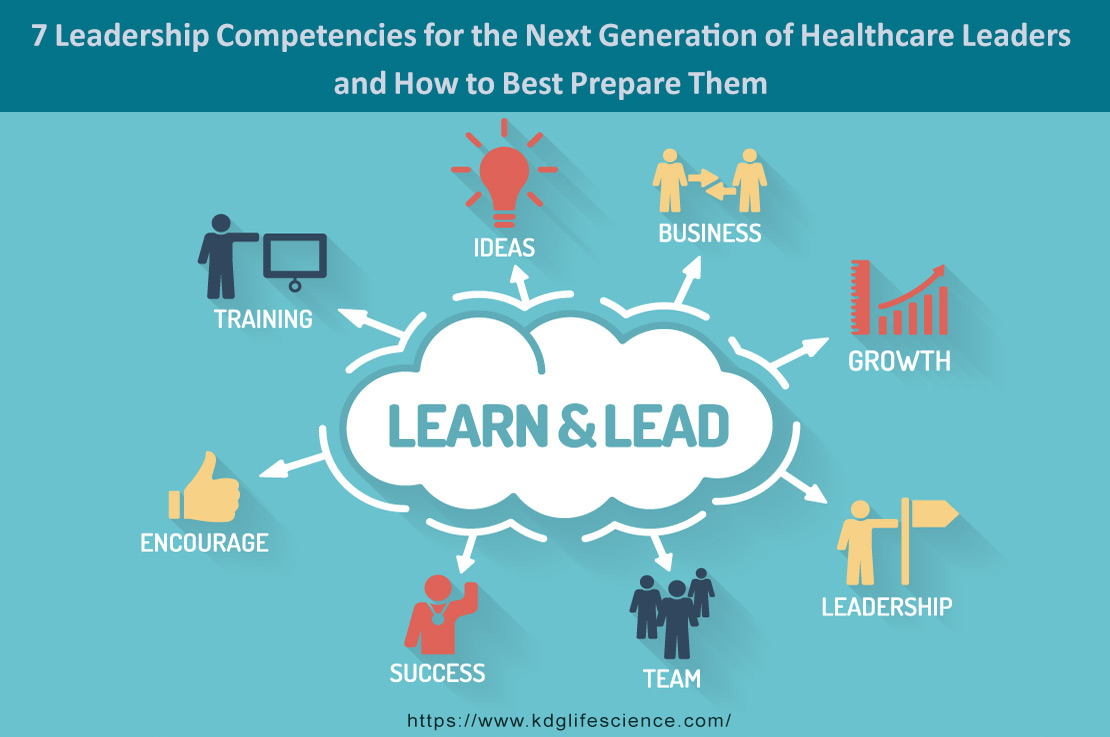Healthcare landscapes the world over are changing. Boomers are set to test the limits of existing healthcare delivery systems, if not overwhelm them. Centralized operating models are giving way to decentralized ones. New competitors (insurance companies, retail specialists, privately managed healthcare corporations) replace traditional rivals. The introduction of telemedicine, virtual diagnostics, and remote monitoring has shortened care delivery times and improved patient outcomes.
NextGen healthcare leadership competencies
Leading and navigating this new paradigm takes a different set of skills and competencies than what current leaders possess. It’s imperative, therefore, that existing leadership teams give serious thought to preparing the next generation of healthcare leaders. The challenge, however, is how to train and develop this new breed of leaders?
The National Center for Healthcare Leadership (NCHL) offers its Healthcare Leadership Competency Model 3.0 as a guide to understanding and developing next-generation healthcare leaders.

The model distinguishes those competencies into two broad domains:
- Action Competencies: Which define the traits and skills of a leader in the context of how they do their work; and
- Enabling Competencies: That defines leaders in the context of who they are, and how they will lead their organizations
At a very high-level, competencies such as strategic vision, creative thinking, risk management, change management, networking and collaboration, delegation, negotiating and influencing and people-management are skills that will be even more valued in next-gen leadership.
When sufficiently nurtured and developed, the competencies in both domains serve to create leaders capable of leading the next generation of healthcare organizations. But it will take a different approach to training and development to create leadership teams to lead in the new healthcare paradigm.
Next-gen leadership training strategies
Existing leadership teams, comprising largely of Boomers and Gen X/Y’ers, are set to become users of the healthcare delivery systems they created. They’ll pass the leadership torch to a crop of millennial leadership hopefuls who have a different set of values. When it comes to learning and developing for their new roles, the next-gen leader has different preferences and expectations.
Trainers and healthcare facility administrators need to deploy a different set of training strategies to deal with this impending change. Here are six training strategies to consider:
-
Engagement versus Assignment
Unlike most leaders from a prior generation, Millennials and generations thereafter, learn from a young age to challenge new concepts, question more, and engage with everyone. It’s not that they are being rebellious – that’s just the way they’re “wired”. Next-gen leadership training strategies must, therefore, accept this new reality.
Instead of assigning them a rigidly defined learning/training path, HR managers and healthcare facility administrators must hold open dialogues with future leadership candidates about their (future leadership candidates) training and learning expectations first. Engaging earlier on in the program is likely to produce better training outcomes.
-
Experiencing versus Training
When it comes to acquiring new knowledge and skills, younger leadership hopefuls are more attuned to doing so through experiences, as opposed to structured learning programs only. Any training strategy aiming to cultivate a new crop of future leaders must lean heavily towards experiential learning opportunities rather than in-class or lecture-based learning.
One way to do this is to assign prospective leadership candidates rotating roles within the care facilities they’ll be leading in the future. Let them experience various facets of leadership under the mentorship of current leaders.
-
Online and Blended learning versus In-class and Instructor-led only
Next-gen leaders are more tech-savvy than their predecessors. Because they are at ease with technology, new leadership training strategies must leverage that reality by leaning more towards online learning as opposed to in-class or instructor-led training. Where it isn’t practical to deliver learning entirely through digital-only means, for instance when learning soft skills such as people management, networking, and collaboration, a blended training approach is more effective.
The American Society for Health Care Risk Management (ASHRM) offers a blended learning Enterprise Risk Management (ERM) Certificate Program to help new leaders identify, understand and manage a myriad of healthcare environment risks. The program is based on eight online modules, that provide inputs to improve learner experience in the last in-class module.
-
Microlearning versus extended intensive learning
Healthcare sciences is a continually evolving discipline. As such, leadership in the field must constantly evolve. New leadership training models recognize that learners have limited capacity to receive, process, understand and retain new concepts. Training approaches are adapting to this fact.
Microlearning strategies continually introduce new concepts to future leaders, not in huge 4-week training sessions, but in short bursts, typically via digital medium. A central building block of any successful microlearning strategy must be mobile-enabled learning so busy clinicians, aspiring to lead their organizations in future, can learn on the go.
-
Continuous learning versus occasional training
As indicated at the outset of our discussion, healthcare is a continually evolving field, which requires leaders to also constantly hone their leadership skills. Next-gen leadership training strategies must, therefore, include elements of ongoing skills development, as opposed to just periodic learning.
Hospital training managers and healthcare facility administrators may consider the use of free Massive Open Online Courses (MOOCs), on an ongoing basis, to cultivate next-gen healthcare leadership teams. Making such resources part of the overall training program is especially useful for building leadership skills amongst clinicians who lack business management and strategic vision-building skills.
-
Peer learning versus Trainer-initiated learning
In large part, because they are extremely tech-savvy, next-gen leaders often engage, and exchange thoughts, ideas, and information, with their peers using Social Media, Chat and Texting. They do so more frequently and with greater effectiveness than leaders from the prior generation. Next-gen leadership training strategies can use this development as an opportunity.
The Agency for Healthcare Research and Quality (AHRQ) offers peer-to-peer coaching tools and resources where nurses, physicians, and other clinical practitioners and teams collaborate and work together to learn from each other’s experiences. Integrating such tools into core leadership training programs can facilitate the concept of clinical leaders learning from other clinicians.
Summing it all up
The next generation of healthcare delivery is likely to be vastly different than what we see today. It’ll, therefore, take leaders with a unique set of competencies to lead healthcare organizations into that new paradigm. While we can’t predict exactly how things will unfold, we can start nurturing future leaders with the broad sets of competencies that they’ll most likely need. Successful leaders must have vision and the ability to inspire others to follow them. They must manage risk and master the art of change management.
They must also have creative thinking skills, be empathetic people managers, and possess personality traits that endear them to, as opposed to antagonizing, people. Above all, one of the core competencies that tomorrow’s leaders must possess is the ability to groom others to take the helm of the organization once they’ve left.
The training strategies discussed here can go a long way in improving healthcare leadership knowledge, enhancing management skills among front line healthcare staff, and building future capacity within institutional leadership pipelines.


Leave A Comment